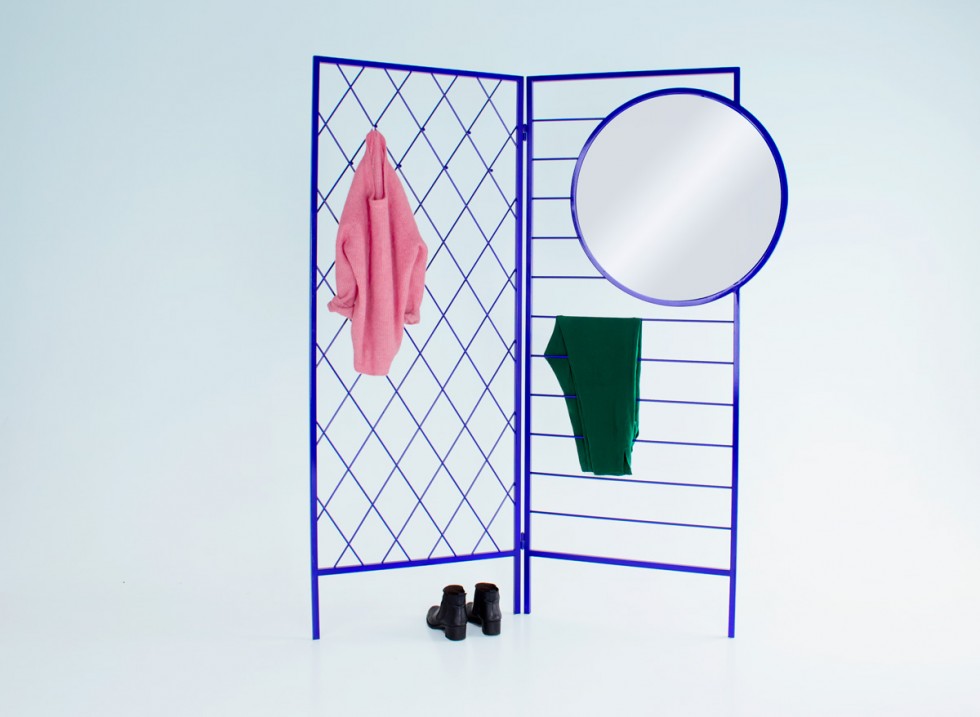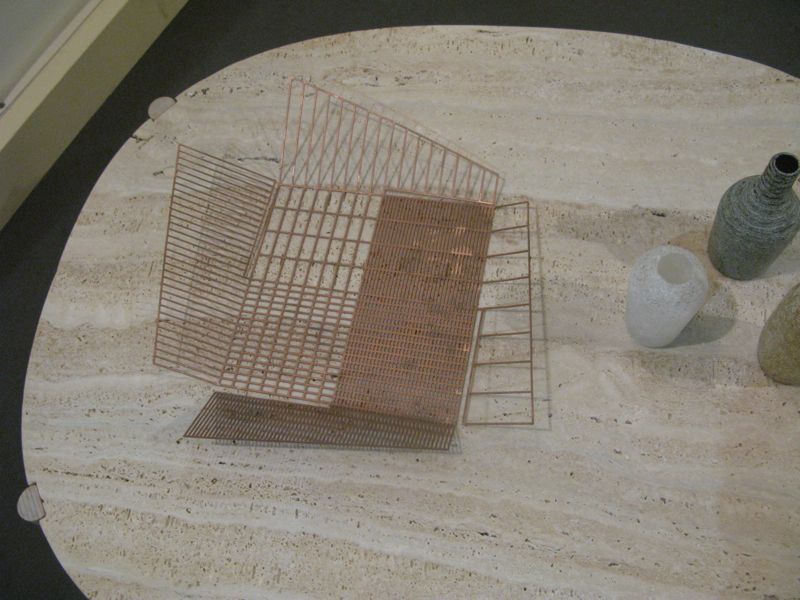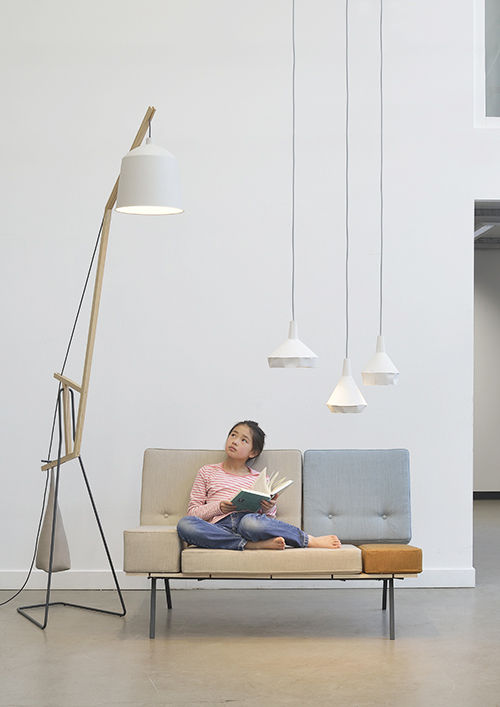One of the highlights of Milan design week each year is SaloneSatellite - the young designers showcase held as part of Salone del Mobile. Designers must be under 35 years old and can only show for three years but these rules ensure the event is constantly evolving with new names coming through each year. As a springboard to bigger things, Satellite has an amazing track record, with designers such as Staffan Holm, Daniel Rybakken and Sebastian Herkner all having shown at Satellite several times before leaping to stardom.
Vera Kleppe and Åshild Kyte seem to be attracting plenty of attention of late with mentions in Wallpaper magazine, Dezeen and Dwell. Their collection of lacquered steel pieces have a strong identity while being open and delicate. The screen has a particularly effective use of pattern that is also highly functional.
Japanese designer Junpei Tamaki showed a cabinet called 'Snowscape' that was also working in fine steel but which had a totally different aesthetic. The fine perforated material uses different patterns in the doors to create special effects when the doors are slid on top of each other. Very different from his felt pieces 'Dress' and 'Massive' (two armchairs with matching pendant lights) from last year's Satellite, Tamaki is definitely another name to watch.
Another Japanese designer who impressed with his graphic use of materials - in this case in both metal and marble - was Tsukasa Goto. A graduate from the University of Art & Design Tokyo, Goto moved to Milan in 2004 where he has worked for David Chipperfield's Milan office and collaborated with some talented Italian designers such as Marco Guazzini. His marble pieces were made in collaboration with UP GROUP.
One of my favourite young designers from SaloneSatellite last year is Joa Herrenknecht. This German designer is incredibly prolific and released a host of new products ranging from a platform-style sofa to side tables and ceramics, mirrors and circular wall units.
A very exciting discovery was the work of Aust & Amelung (Miriam Aust and Sebastian Amelung), a young German studio based in Kassel. Immediately appealing for their wonkiness and exaggerated seams, the duo's 'Like paper' pendant lights are actually made of slewed concrete - a process that adds a unique quality to each piece. Married with their 'A floor lamp' and 'A bench' sofa (and it's matching armchair) the pieces created a fantastic dynamic on the stand. 'A floor lamp' is an oversized floor light that has bucket loads of personality courtesy of it's metal and timber structure and it's sack-like counterweight. The sofa has blocky cushion elements that can be rearranged to create a variety of looks with the cushions locking into place by a small metal rod that is attached to each cushion.
Iranian born Bahbek Hashemi-Nezhad, formed his design studio in 2008 after completing a degree at the Royal College of Art London. He showed what might be the simplest but most effective shelving concept ever. His 'Shelframe' and 'Mono' and 'Duo shelves use a fine twisted steel wire to support either a box-like picture frame or a deeper flat shelf. The minimal installation makes the concept perfect for all the DIY challenged people out there. The idea stemmed from old picture frames and the simplicity of hanging a picture on a nail. Hashemi-Nezhad sees it as the perfect shelving system for renters as you can always find an old nail or screw in the wall somewhere.
Isabel Ahm is a Danish designer who showed just two products on her stand but they were both beautifully executed. The 'Rúna' table was conceived as a way to overcome the mess that tends to accumulate on dining tables when you work or study from home. By simply adding drawers to the dining table, things can quickly be put away when it's time to eat. The table is made from solid oak - stained an exotic dark tone.
Karoline Fesser is a German designer who has shown for the last two years at SaloneSatellite and is gaining a reputation as a young designer to watch. Her 'Sample Avenue' glass vessels were included in Li Edelkoort's Nomadism exhibition last Salone. This year Fesser was working in turned wood and folded metal. Her 'All wood stool' is as simple as it comes - essentially based on the archetype of a height adjustable factory stool, she has made it her own by making the entire thing from wood - in maple or European hornbeam - a timber I had never heard of before. More intriguing was her '96º ' shelving in powder coated steel that is made up of a base, along with a series of box sections and lids which can be stacked to create shelving of various heights. The name refers to the angle of the bent steel.
Swedish Ninja is a name you can't forget. The alter-ego of Mälmo based designer Maria Gustavsson, Swedish Ninja showed some delightfully playful and colourful pieces with a hefty influence from the Memphis movement folded in.
Swedish NInja's funky 'Rufus' cabinet features a green marble top and delicate shades of green in it's drawer fronts.
The eventual winners of the SaloneSatellite Award were an Italian based studio, From Industrial Design, with their tube-like LED pendant light made from extruded aluminium in various surface finishes, 'Volta'. The simple tubular light can be rotated to throw light in various directions. The award wins the studio a hefty 10,000 euro. Manuel Amaral Netto, Cesare Bizzotto and Tobias Nitsche who founded From Industrial Design, are all graduates of Swiss design school, ECAL.
As you can see from this post, the standard of SaloneSatelite is quite outstanding as it will undoubtedly be again next year. I can't wait. Along with Ventura Lambrate, this event is one of the must sees for any Milan Design Week visitor.
























